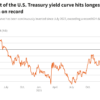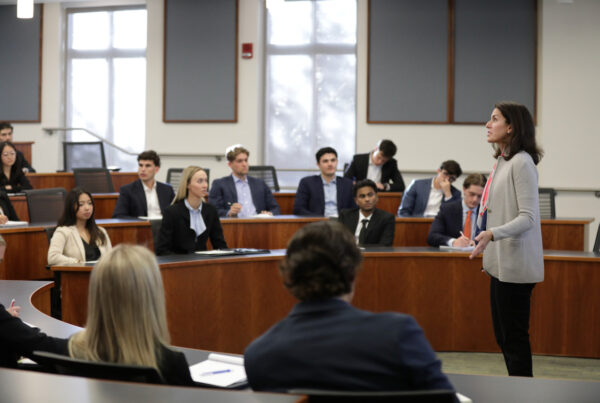David A. Wein, M.D. is the Chief of Emergency Medicine at Tampa General Hospital, System Medical Director for TeamHealth, and an Associate Professor at USF Morsani College of Medicine.
Rachel Elias Wein: David, it has been more than a month since our last post. Right now, concern is growing about additional infections. Where are we in terms of Covid-19 cases?
Dr. David A. Wein: You’re right—it’s a fast-moving situation. The picture can change in a relatively short span of time. Broadly speaking, we are seeing significant increases in cases in parts of the West as well as the Southeast, especially here in the Tampa Bay area. The list of states in which Covid-19 infections are trending upward appears to be growing by the day.
REW: It seems that states that reopened early are now seeing surges.
DW: It can take between two and four weeks for new infections to start to show up in the numbers recorded by state public health agencies. So, we’re somewhere between two and three replication cycles of the virus since many states’ reopening; additionally from what I’ve seen locally, people seem to be more comfortable resuming normal activity. There have been outbreaks tied to parties, restaurants, gyms, etc.
REW: Any progress with respect to treatment?
DW: Over the past month, we haven’t seen any major leaps forward in terms of pharmacologic treatment. In early June, Gilead did announce some positive news about remdesivir in moderately ill patients with pneumonia. We’re continuing to study the efficacy of immune modulators in addressing the ‘cytokine storm’ that can be part of the disease progression, but we have no definitive results as yet for any of the hypothesized prophylactic medications. There’s emerging science on dexamethasone as being an effective treatment for the most severe patients, but it could have dangerous side effects when used with more mild cases. A clinical study in the UK found that dexamethasone significantly reduced death for patients on a ventilator or using supplemental oxygen, but slightly increased the death rate for patients not receiving respiratory support.
REW: What about alternative therapeutics?
DW: Your readers are probably familiar with the idea of convalescent plasma, where you take antibodies from someone who has recovered from Covid-19 and give them, in a blood transfusion, to someone who is currently infected. In addition to this, companies are now exploring the efficacy of delivering antibodies directly to patients.
I can’t report any major breakthroughs on these fronts, but I can certainly say that doctors are continuing to make progress on supporting patients appropriately in an intensive-care setting. It’s things like knowing precisely when to intubate patients and how to manage patients on ventilators in detail. These developments don’t generally make headlines, but they are not a small consideration. In fact, they’re likely part of the reason that we have seen some improvement on death rates for hospitalized Covid-19 patients. Remember that deaths are also a lagging indicator, so time will tell with respect to death rates associated with these new upticks in infection.
RW: I continue to be concerned that many Americans anticipate best-case scenarios on the medical front when we’ve yet to see best-case scenarios in our handling of the pandemic so far. The topic of vaccines seems particularly fraught. Where we are with vaccines?
DW: Let’s start with the good news. We are seeing a concerted effort globally to pursue multiple approaches to vaccines. There are lots of trials underway, and that potentially increases the odds of discovering a safe and effective route to mitigating harm from the virus.
REW: And there are some new approaches being tested, right?
DW: In the traditional approach to vaccination, you expose your body to an inactivated or dead virus that cannot cause infection. Your immune system sees certain proteins on the surface of that inert virus and then makes antibodies against it, which are effective against the actual pathogen. However, researchers are also working on a vaccine that is based on RNA—the genetic material that your body uses to produce proteins. The idea is that, if you give people viral genetic material, their cells will manufacture certain proteins—again, not whole virus—from that and make antibodies that are effective against Covid-19.
REW: So you’re giving viral genetic code, in other words, that your cells use to make antigen proteins, to then make antibodies. Do I have that right?
DW: Exactly.
Meanwhile, several companies have been selected to begin to manufacture vaccines for Phase 3 trials, to be completed over the next month or two. Phases 1 and 2 are generally small, for basic safety reasons. In these early phases, researchers do monitor whether the vaccines they’re testing increase antibodies. The next question is whether those vaccines are generally safe and effective when administered to large numbers of people. Doctors and public health professionals will be closely watching this data as it emerges.
REW: I’m concerned about setbacks we’ve seen in vaccine development like what happened with Dengue Fever which ran into major safety and efficacy issues in Phase 3. There are no guarantees here, right?
DW: That’s right. There are good reasons to study vaccines in larger populations. It’s also important to remember that even good vaccines are not 100 percent effective. Flu vaccines, for instance, prevent some people from getting the infection entirely; others still get infected, but with milder illness caused by that particular strain.
What we want is a ‘good’ Covid-19 vaccine. We can’t just assume that, because a particular vaccine has worked in 20 people, it is safe and effective for the entire human population. Larger-scale studies are necessary. They take time.
REW: Until we have a safe and effective vaccine, managing this disease is all about widespread testing, contact-tracing, mask-wearing, handwashing, social-distancing and the like, correct? Are we doing enough?
DW: The methods that you’re talking about, they all work together. On a single day last week—June 25th—state health departments reported a total of 39,327 new coronavirus infections in the United States. With cases on the rise, Dr. Scott Gottlieb, the former FDA commissioner, is sounding the alarm about complacency. One of his messages, and it’s a compelling one, is that consumer sentiment, if you will, is driving public policy, not the other way around. But what you want is strong governmental leadership based on a sound understanding of medical science and the fundamentals of public health.
REW: In other words, when people were fearful and wanted to stay home, policy changed to reflect that. And now that cabin fever has set in—and of course, this has been accompanied for many people by very serious economic concerns—we’re seeing the pendulum swing back.
DW: Right. But that doesn’t mean we don’t need a coordinated response to testing and contact tracing, as well as maximum compliance with safety guidelines, including social-distancing, mask-wearing and handwashing, as you mention.
From my perspective as a medical professional, it still makes sense to avoid situations that involve unnecessary risk. Even if you’re outside, it’s better to stay at least six feet away from those who are not part of your household. Mask-wearing is clearly effective in helping us control the spread of this disease. While bars and restaurants are open, spending two hours inside an establishment where you have to take off your mask to eat and drink, and where others must do the same, is probably not the best plan. Likewise, if you can find a way to do curbside pickup or delivery, that is better than spending 30 minutes inside a grocery store.
REW: Landlords and retailers may not like to hear that. They’re doing their best to reopen and bring customers back.
DW: Certainly, and that balance will continue to be challenging.
REW: But the virus doesn’t care what we think. It will do what it’s going to do regardless of whether you’re anxious about it or believe you’re invulnerable.
DW: Exactly. The absence of governmental leadership—of intelligent, data-driven conversations around both policy and the moral and ethical dimensions to this pandemic—is striking. It could be the case that by spending ‘X’ billion dollars on public health and education initiatives, we could actually have a far-more-productive economy. Who knows how many lives we could save as well? But near as I can tell, no one at the policymaking level is having such discussions.
REW: I’d certainly like to see those discussions happen. Thanks again for taking time to bring us up to speed.
DW: Anytime. Thanks to you and your readers for caring about these issues.








